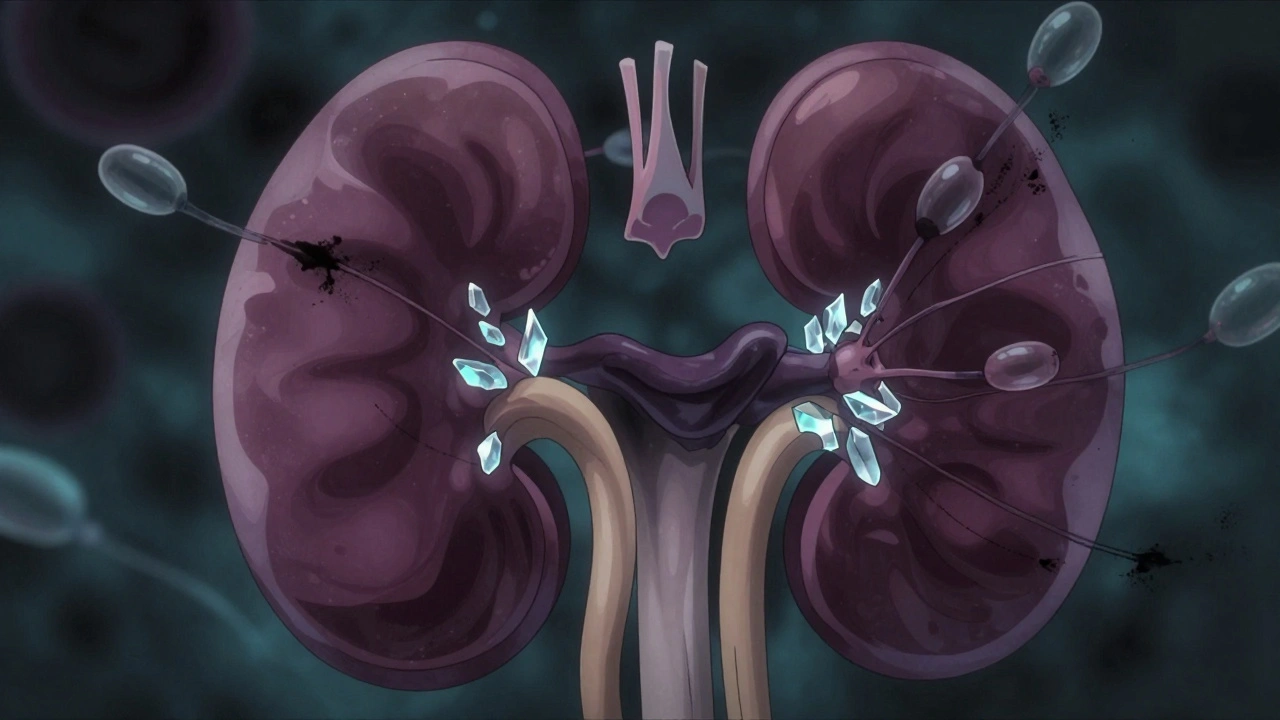Thiazide diuretics like hydrochlorothiazide effectively lower blood pressure but can raise uric acid levels, increasing gout risk. Learn who’s most at risk, how to manage it, and safer alternatives.
Uric Acid: What It Is and How It Affects Your Body
Uric acid is a waste product that forms when your body breaks down purines – the same stuff found in DNA, some foods, and even your own cells. Most of it dissolves in the blood, travels to the kidneys, and leaves the body in urine. When that process works smoothly, you never notice it. Problems start when the balance tips and uric acid piles up.
Why Uric Acid Levels Rise
Several everyday factors can push uric acid higher than normal. Eating a lot of red meat, shellfish, or organ meats adds extra purines. Sugary drinks, especially those with high‑fructose corn syrup, boost production too. Your kidneys might just be too slow to filter, which can happen as you age or if you have hypertension or diabetes. Certain medications, like diuretics, can also hold onto uric acid.
When the blood concentration cracks the 6.8 mg/dL mark, crystals may form. Those tiny needles settle in joints, tendons, or kidneys, leading to the pain of gout, swelling, and even kidney stones. You’ll often feel sudden, sharp pain in the big toe, but it can hit the ankle, knee, or fingers too.
Practical Ways to Lower Uric Acid
First, hit the kitchen. Cut back on red meat, pork, and especially organ meats like liver. Swap them for chicken, beans, or low‑fat dairy – the latter actually helps the kidneys flush out uric acid. Limit alcohol, especially beer, because it’s a double‑whammy of purines and dehydration.
Hydration is a free tool. Aim for at least eight glasses of water a day; more if you exercise or live in a hot climate. Water dilutes uric acid and helps the kidneys do their job.
Weight matters, too. Even a modest 5‑10 % loss can drop uric acid levels noticeably. Focus on steady, low‑impact activity like walking, cycling, or swimming. It burns calories without stressing the joints you’re trying to protect.
If lifestyle tweaks aren’t enough, talk to a doctor. Medications such as allopurinol or febuxostat lower production, while probenecid improves kidney excretion. Never start a prescription on your own – the right drug depends on your overall health and other meds.
Lastly, keep an eye on the numbers. A simple blood test tells you where you stand. Repeat it every few months if you’ve made changes or have a history of gout. Seeing trends helps you adjust diet or meds before a flare‑up hits.
Bottom line: uric acid is a normal part of metabolism, but when it builds up it can cause real pain and kidney issues. By trimming purine‑rich foods, staying hydrated, maintaining a healthy weight, and checking in with your doctor, you can keep levels in the safe zone and avoid the dreaded gout attack.
Curious if your blood pressure meds can affect gout? This in-depth article explains the connection between terazosin and gout, how terazosin may influence uric acid levels, and what patients need to watch for. You'll get science-backed info, real-world tips, and practical guidance to manage both conditions without getting overwhelmed. We clear up common myths and give you the tools to talk with your doctor about terazosin and your risk for gout.


